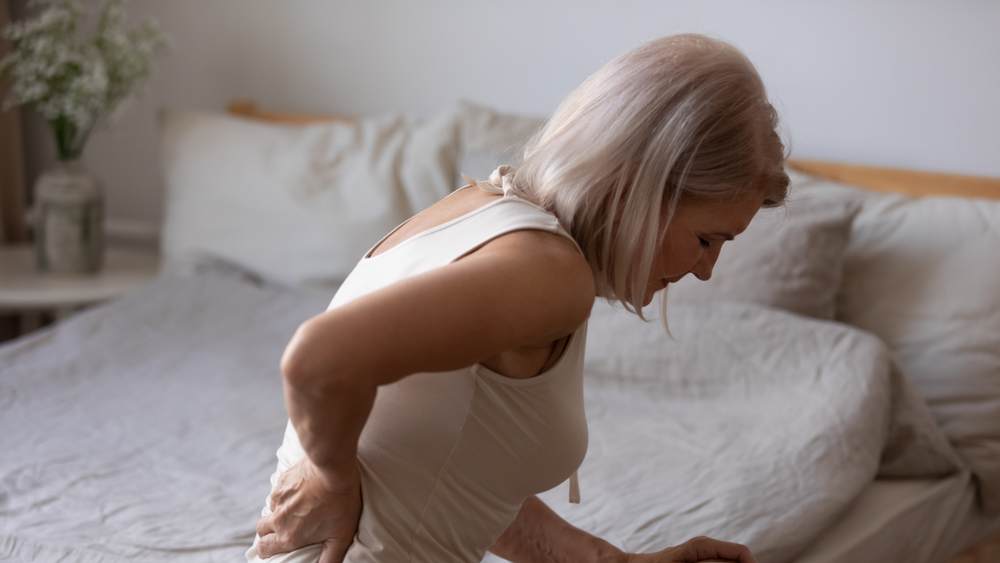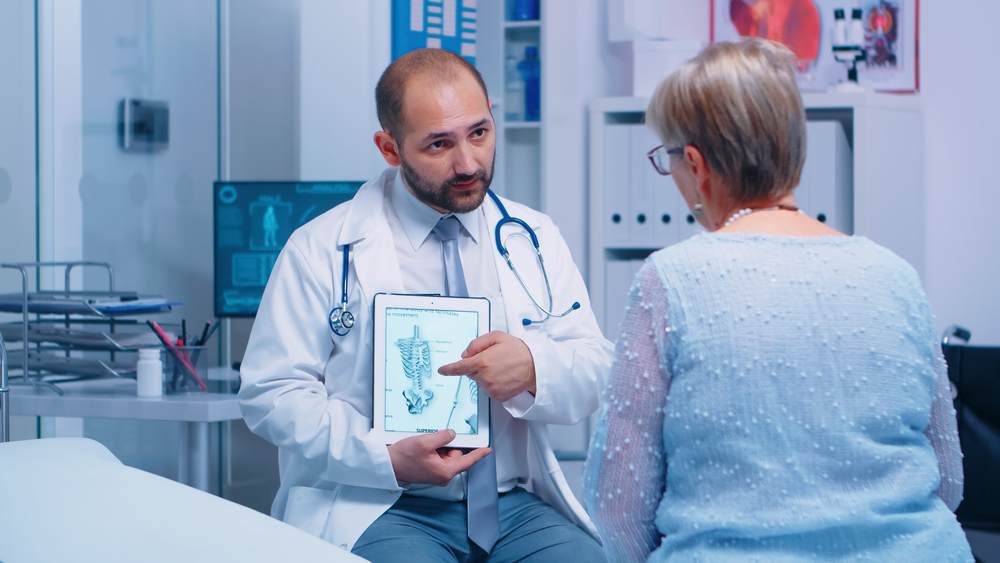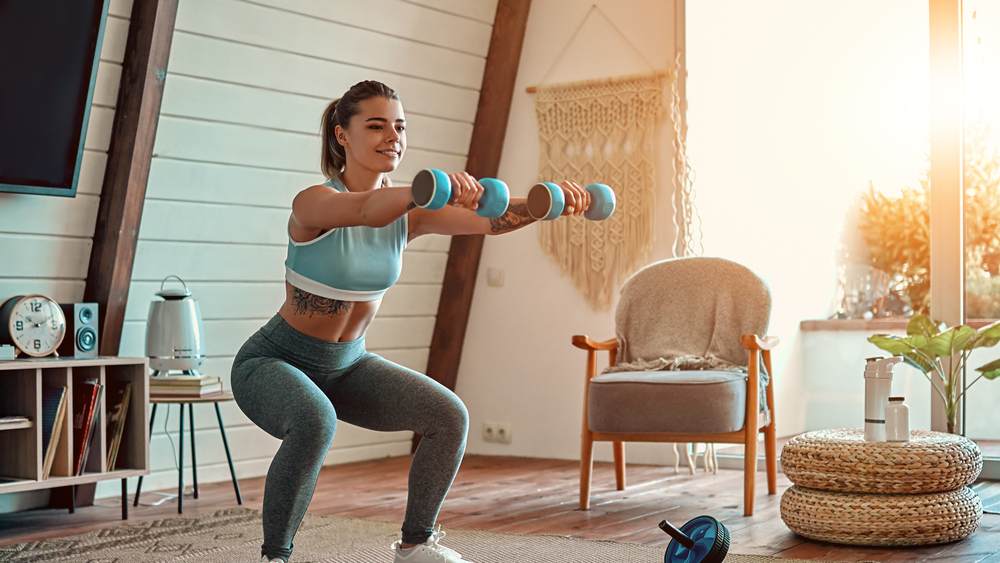 Osteoporosis is a health condition that affects your bones. As a woman, you are more likely to experience broken bones because of how osteoporosis weakens bones. Osteoporosis affects more women than men. In fact, approximately 80% of osteoporosis diagnoses are in women. That means of the millions of Americans who have osteoporosis, a vast majority are women. You may not even realize you have osteoporosis because you cannot actually feel your bones getting weaker. That’s why osteoporosis is also known as a “silent disease.” Many people do not know they have osteoporosis until they break a bone. Women are at greater risk for low bone density and osteoporosis. Here’s what women need to know about osteoporosis and how it can affect them.
Osteoporosis is a health condition that affects your bones. As a woman, you are more likely to experience broken bones because of how osteoporosis weakens bones. Osteoporosis affects more women than men. In fact, approximately 80% of osteoporosis diagnoses are in women. That means of the millions of Americans who have osteoporosis, a vast majority are women. You may not even realize you have osteoporosis because you cannot actually feel your bones getting weaker. That’s why osteoporosis is also known as a “silent disease.” Many people do not know they have osteoporosis until they break a bone. Women are at greater risk for low bone density and osteoporosis. Here’s what women need to know about osteoporosis and how it can affect them.
What Is Osteoporosis?
Osteoporosis gets its name from Latin and means “porous bones.” You might think of bones as solid masses, but they actually have small spaces inside that look like honeycomb or lace when viewed under a microscope. Healthy bones have small porous spaces that allow blood and nutrients to enrich cells in your bones. However, those small spaces can become larger due to osteoporosis, which can weaken bones over time. Osteoporosis affects bone density and can even cause the outside of bones to lose strength and grow thinner. Older adults experience higher rates of an osteoporosis diagnosis than younger adults, though this disease can occur at any age. An osteoporosis diagnosis means you will be at higher risk for broken bones, also known as fractures. Osteoporosis can cause you to break a bone while going about your normal routines. When most people accidentally slip and fall, they do not end up with a broken bone. However, if you have osteoporosis, a fall could cause you to break a bone more easily.
How a Doctor Diagnoses Osteoporosis
 Because women have higher rates of osteoporosis than men, your primary care doctor will likely keep an eye out for signs of low bone density that can put you at greater risk for developing osteoporosis. But since many people do not realize they have osteoporosis until after they break a bone, many times, your first diagnosis of osteoporosis may come when you visit the emergency room or an orthopedic doctor to get your broken bone set. Here are a few examples of how a doctor diagnoses osteoporosis.
Because women have higher rates of osteoporosis than men, your primary care doctor will likely keep an eye out for signs of low bone density that can put you at greater risk for developing osteoporosis. But since many people do not realize they have osteoporosis until after they break a bone, many times, your first diagnosis of osteoporosis may come when you visit the emergency room or an orthopedic doctor to get your broken bone set. Here are a few examples of how a doctor diagnoses osteoporosis.
Medical History
Your medical history provides your doctor with a lot of information that you may not even realize relates to your broken bone. For example, any nutritional deficiencies in the past could put you at greater risk for developing a condition like osteoporosis. Certain medications can have negative effects on supporting healthy bones. If you have a history of broken bones or a family history of osteoporosis, your doctor will want to consider this information.
Physical Exam
A doctor will perform a physical exam to look for common signs of osteoporosis. A decreased height over time and a low body weight can indicate a risk of osteoporosis. Your doctor may also examine your spine and check for any tenderness over your vertebra or a rounded hunch at the top of your back.
Bone Density Scan
Doctors use the bone density scan called a bone densitometry, which is a type of X-ray that measures the density of your bones. A bone density scan is painless and will typically be used to measure bone density around common areas affected by osteoporosis, like your spine, hips, or wrists. This scan will help your doctor assess bone health and osteoporosis risk and if you are at greater risk for fractures.
Blood & Urine Tests
Your doctor may also request blood and urine tests to help identify any conditions or causes contributing to your bone loss. A blood test can measure your hormone levels and help rule out other potential diagnoses. A urine test can check for calcium and other vitamins in the body to help identify the cause of your osteoporosis.
X-rays & Other Scans
An X-ray can help detect and diagnose different types of bone fractures. If your doctor suspects you have a broken bone, they will likely request X-rays of the specific area. An X-ray will pinpoint the location of the bone break and provide your doctor with detailed images of the area to determine the best course of treatment. Sometimes, your doctor may request a CT scan or MRI, especially for spine issues or injuries.
How Osteoporosis Affects Women
You might wonder, why are women at greater risk for osteoporosis? Men tend to have larger, thicker bones than women do. Because of this, women’s smaller, thinner bones can develop osteoporosis easier than men. While the early stages of osteoporosis may not cause any obvious symptoms, there are a few signs to look out for.
Weakened Strength
We use our hands and wrists for so many everyday functions that weakness or injury can greatly impact healthy functioning. Osteoporosis can cause weakened strength, so you notice it becomes more difficult to grip objects.
Receding Gums
Osteoporosis can cause dental issues like receding gums or even loose teeth. Deterioration of the jawbones can cause your gums to recede. Receding gums is one of the signs of osteoporosis and, combined with other symptoms, can help your doctor reach a diagnosis of osteoporosis.
Brittle Nails
Weak, brittle nails can also signal that you have a health condition like osteoporosis. You may notice that your nails chip or break easily, which can happen when the nails don’t get enough nutrients and proteins. You may notice your nails don’t look as healthy as they used to.
Stooped Spine
A stooped or hunched spine is also known as kyphosis. As you age, you may notice your shoulders and upper back start to look more rounded. Osteoporosis is one of the most common causes of kyphosis in adults.
Lower Back Pain
Osteoporosis can cause the vertebrae in your spine to weaken, which can lead to lower back pain. Women experience lower back pain for many reasons, so you might not consider osteoporosis as the cause at first. When your bones lose density and strength, vertebrae can weaken and compress, causing pain and discomfort.
Fractures
Osteoporosis puts you at greater risk for fractures. A broken bone can occur anywhere in the body, though the three most common places affected by osteoporosis are the hips, spine, and wrists. In fact, the risk of a woman breaking her hip is equal to her risk of developing breast, uterine, or ovarian cancer.
Menopause and Osteoporosis
Women also have greater fluctuations of a hormone called estrogen. Estrogen helps to protect your bones, but women can experience a sharp decline in estrogen due to menopause and other health conditions. Lower estrogen levels can put women at higher risk for developing osteoporosis. Women typically go through menopause in their 40s or 50s, which means they no longer have menstrual cycles. Menopause is a natural process for women, though it can cause uncomfortable symptoms. As estrogen levels in women drop due to menopause, bones can lose strength and density. If you dealt with low bone density before menopause, you might be at greater risk for developing osteoporosis during or after menopause. In fact, menopause can actually speed up bone loss and greatly increase the risk of osteoporosis in women.
Severe vs. Senile Osteoporosis
As osteoporosis gets worse, your bones can get thinner and weaker, which puts you at greater risk for bone fractures. Without preventative care or timely treatment, you can develop severe osteoporosis. Worsening osteoporosis can cause you to suffer a broken bone from the simple act of sneezing or coughing. Loss of height and kyphosis, or a stooped neck posture, are also symptoms of severe osteoporosis. Severe osteoporosis also causes multiple fractures in a short period of time. Severe osteoporosis can also cause a type of broken bone known as a compression fracture, where the normal pressure of your spine can lead to broken vertebrae because the bones have become so weak. Senile osteoporosis is not a separate type of osteoporosis but instead refers to osteoporosis diagnosed in adults aged 70 or older. Your doctor may also diagnose senile osteoporosis when you do not have any other common secondary causes other than aging.
Diet & Exercise Changes to Manage Osteoporosis
 While osteoporosis does not have a cure, natural treatments can help significantly reduce your symptoms and risk for fractures. Lifestyle changes play a huge role in treating osteoporosis in women. Natural treatment options for osteoporosis in women may include increasing your vitamin intake of critical nutrients like vitamin D and calcium. Vitamin D actually helps your body to absorb key nutrients like calcium. Getting enough vitamin D and calcium can come in pill form or with changes to your diet. Healthy eating is the best way to get vitamins and nutrients to help with bone density. However, your doctor may also recommend calcium supplements if you do not get enough from the foods you eat. Women with dairy allergies or who are lactose intolerant can try lactose-free products or consider other food sources of calcium, like orange juice, kale, and broccoli. Food and drink rich in Vitamin D include salmon, tuna fish, egg yolks, milk, and orange juice.
While osteoporosis does not have a cure, natural treatments can help significantly reduce your symptoms and risk for fractures. Lifestyle changes play a huge role in treating osteoporosis in women. Natural treatment options for osteoporosis in women may include increasing your vitamin intake of critical nutrients like vitamin D and calcium. Vitamin D actually helps your body to absorb key nutrients like calcium. Getting enough vitamin D and calcium can come in pill form or with changes to your diet. Healthy eating is the best way to get vitamins and nutrients to help with bone density. However, your doctor may also recommend calcium supplements if you do not get enough from the foods you eat. Women with dairy allergies or who are lactose intolerant can try lactose-free products or consider other food sources of calcium, like orange juice, kale, and broccoli. Food and drink rich in Vitamin D include salmon, tuna fish, egg yolks, milk, and orange juice.
Regular exercise and physical activity can also help manage and prevent osteoporosis. When you exercise regularly, you strengthen muscles and improve your balance. Strong muscles and good balance control can help you avoid slips and falls that put you at greater risk for a broken bone if you have osteoporosis. Weight-bearing exercises and activities are also important for preventing bone loss due to osteoporosis. Incorporate a daily walk into your routine or try activities like going to a yoga or dancing class. Resistance training like pushups, squats, and leg presses all use your body’s natural weight and encourage healthy movements between your bones and muscles. Your doctor may also recommend working with a physical therapist to learn safe and effective ways to strengthen your bones and improve your balance and coordination. Exercising regularly also positively affects your heart health and can even help improve your mental health and well-being.
How Women Can Prevent Weak Bones & Osteoporosis
By working with your doctor early in life, you learn how to prevent weak bones and osteoporosis. Parents of young and adolescent girls can encourage a healthy diet and exercising regularly to help build strong bones and healthy habits. Because women are at a much greater risk for osteoporosis, it helps to focus on risk factors you can control, like getting enough vitamins and improving your strength, balance, and coordination throughout your life. Osteoporosis in women is preventable, and you can learn how to build and maintain strong bones at any age. You can also avoid activities that may put you at greater risk of losing bone density, like smoking, poor nutrition, and physical inactivity. Smoking can put you at greater risk for broken bones. You can also talk to your doctor about whether you could benefit from certain medications to help prevent bone loss. Prescription medications for osteoporosis can help treat bone loss and build backbone mass. Most health insurance plans cover screenings for osteoporosis, so you can determine whether you have signs or risk factors for osteoporosis early in life.
If you are at risk for developing osteoporosis or already have a diagnosis, our team of doctors at AICA Orthopedics in Atlanta can help. We have a highly skilled and knowledgeable team of orthopedic doctors, neurologists, physical therapists, and chiropractors who can provide you with comprehensive treatment and care. Whether you need a broken bone set or want to work through a physical therapy plan to improve your strength and balance, our team at AICA Orthopedics is here to help you. We recognize the importance of osteoporosis prevention and early intervention so you can enjoy a healthy and active life regardless of age.
